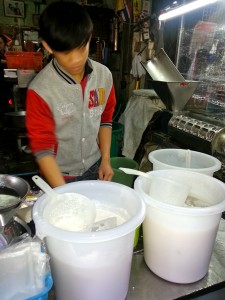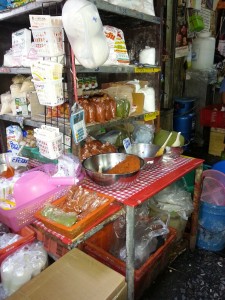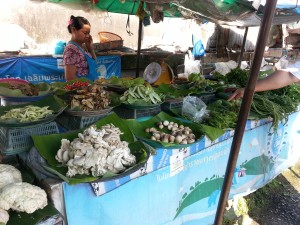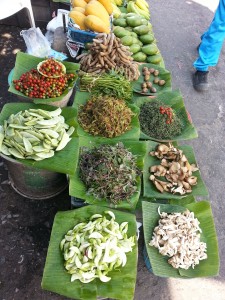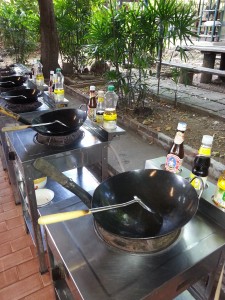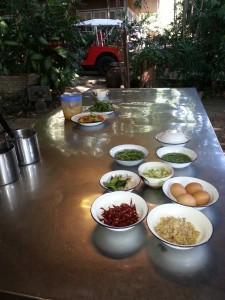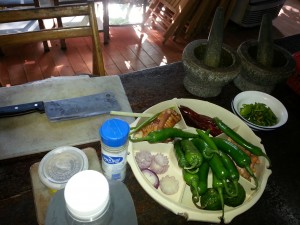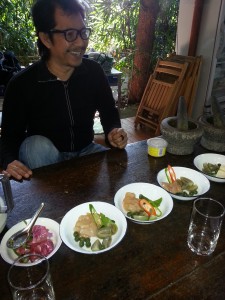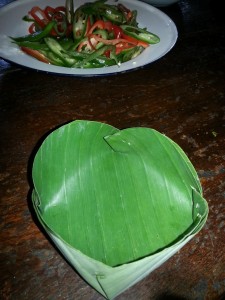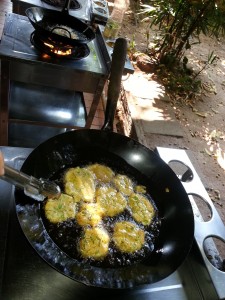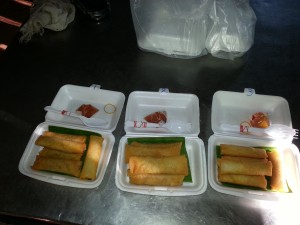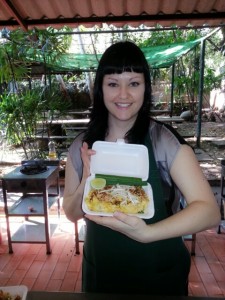In my wanderings around Chiang Mai, I noticed that some trees had multi-coloured ribbons tied around their trunks. At first I thought it was only older trees, but then I noticed some younger, smaller trees had the ribbon tired around them too. Since the trees were near roads, I thought perhaps someone had died there in a car accident. In the west people sometimes tie something around a tree to honour a death in the area. I asked a local what it meant and was told that the ribbon signified there is a spirit living in that tree.
The ribbon acts as a beacon of warning to those who may be considering the destruction of that tree. The trees with spirits inside them are thought to be sacred and are not to be cut or damaged in any way. If the tree was damaged, the assailant would inherit a curse for angering the spirit which is why the ribbons are usually bright and multi-coloured: so all can see. Above, that tree is overtaking the entire sidewalk and will probably spread to the road in the years to come, but no one will stop it.
The fact that the spirit has chosen to take up house in that tree makes the tree sacred to Thai people, so even if the spirit eventually leaves, the tree remains devine. In the above picture you can see some miniature dolls and other offerings have been left to appease the spirit. Whether or not the identity of the spirit is known does not seem to matter. Those who pass by step around and show respect. Interesting, huh?


